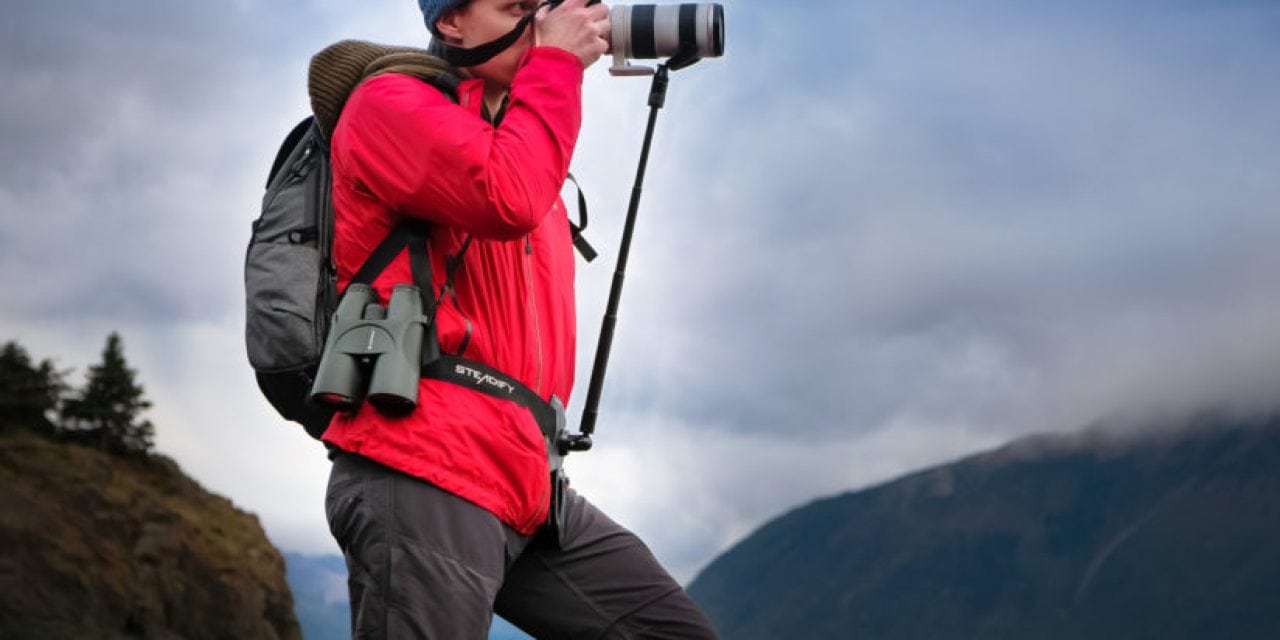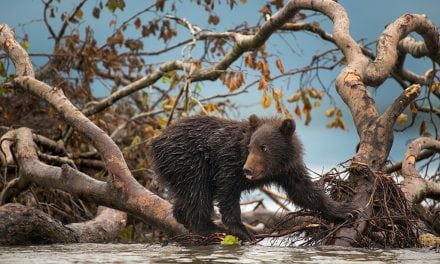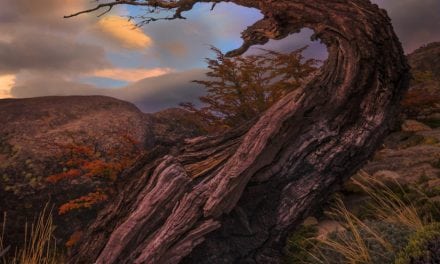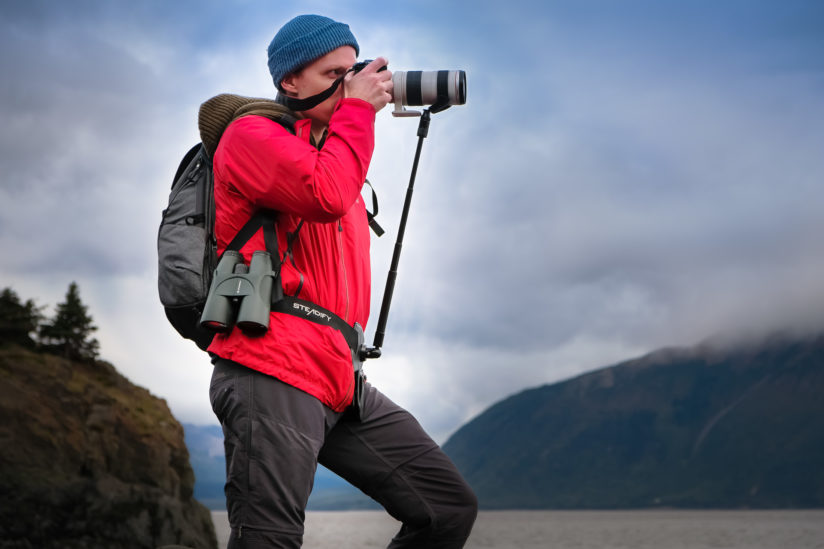
Plodding along the swampy shores of Turnagain Arm in Alaska, your feet sink into the gritty mud, swallowing your shoes like quicksand.
Your gaze floats across the flat lake, and climbs up to the peaks of the Chugach Mountains, each crevice on its wind rugged-rocks, a story etched.
But, when you check-out the flock of sandpipers on the beach, you sense an imminent interruption to this perfect peace. Those birds are spooked by your presence, perched ready to fly away.
This is exactly where I found myself among the serene Alaskan terrain. And in that moment, I sought to capture the pipers’ impending flight.
I’m Gert Wagner, a life-long photographer and videographer. As photographers, when we capture that exquisite moment, it’s exhilarating. Along my travels, I’ve found that there’s a few key elements to that perfect photo. Sometimes it happens with a chance click of the shutter. Sometimes the shot is visualized clearly and composed with care. Either way, that crisp moment of discovery requires a few key elements to coalesce:
- The practiced eye of a creative
- The quick reflexes of a pro
- And, in many cases, the stability of a tripod
However, stability and quickness often contradict one another.
Still, proper stabilization is the difference between great and failed results. Traditionally, tripods are used to bring this needed element of stability to photo and video. But, in the field, there are also clear limitations of tripods. A tripod is clumsy and can be a burden when hiking or traveling around. They limit discovery in more remote areas. Finally, they take time to set-up. When it comes to capturing fleeting moments, a shot can be missed in the time between set and snap.
And in fact, in that moment of tripod setup, your pipers are out of view.
My son Tobias and I searched for an answer to this problem: as traveling photographers and filmmakers, how can we be both quick and stable when capturing footage? For both our professional and personal life, we developed a solution resulting in superior images without the hurdles of bulkier tools. Together, we created Steadify, a wearable stabilizer allowing for agility, flexibility, and most of all stability on-the-go.
Steadify Redefines The Physics Of Camera Stabilization
Steadify works from the hip, as opposed to from the ground like most tripods. While standing solidly on both legs, the hip is the most steady part of the human body. This effect is amplified when adding vertical pressure to the Steadify mount, which comes naturally when holding a camera, binoculars, or scopes to the eyes. At this point, the body and Steadify form a solid triangle of incredible stability, more stable than a monopod. The effect is instantly tangible and a truly stunning experience, resulting in crisp photos, smooth videos, clear and steady views from binoculars and scopes, endless stand-by, and no missed opportunities.
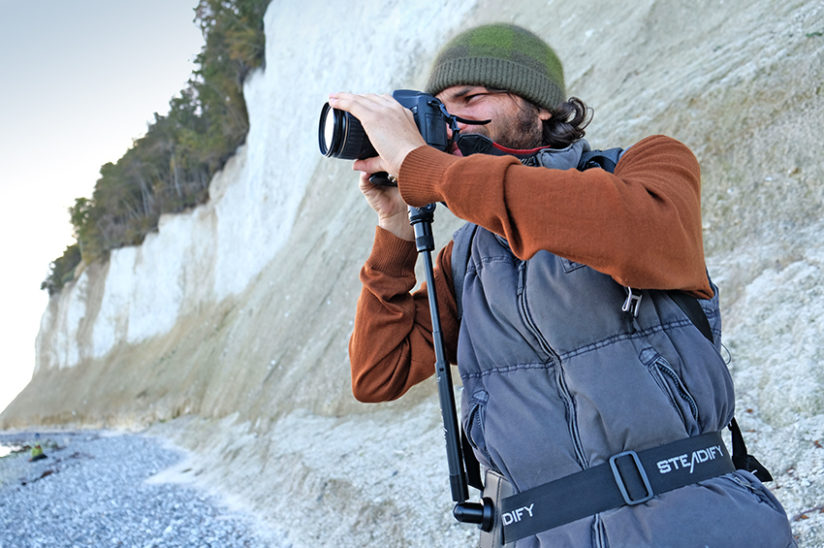
Maximizing image quality and minimizing baggage and set-up, Steadify stabilizes binoculars, scopes, and barrels absorbing the weight of any device—you can switch from binoculars to camera with ease. Steadify also functions as a jib arm for fluid vertical and horizontal video camera movements, a bonus usually found in more elaborate equipment.
Back To The Trenches
After a year of developing Steadify, Tobias and I piloted our new device on an expedition with a group in Alaska. I watched my colleagues struggle along our climbs, encumbered by the weight of their tripods. Although they rarely used them, they lugged them around the whole hike through. Even so, at points, when tripods were deployed in the shore sands, the tripod legs sagged into the wet beaches.In these situations and many others, we found Steadify solves three clear problems of the trade:
- Steadify stabilizes your device, regardless of rocky terrain
- It remains completely mobile while viewing or shooting, no standby fatigue for long scopes
- The lightweight device lies snug on your hip with a single swoop setup, whisper quiet
See Steadify in action here:
Launch on July 18. Delivery in September. Check out the Kickstarter campaign!
I’m proud of our invention. In a time where all our equipment requires batteries and small parts, we revel in Steadify’s effective simplicity, literally grounding us back into the outdoors. The mobility the device invites allows for travel toward more remote or preserved areas. For example, in his most recent article in OP, Justin Black articulates that Zion National Park actually outlawed tripods to preserve the beauty of the land. Steadify has you covered allowing you to shoot—right from the hip—every time.
My son and I invite you into a new world of quick stability, redefining the physics of camera stabilization. Learn more about our travel journeys and how Steadify can help you Be Pro. On the go. And become the tripod.
Like those sandpipers, lighten your load and let your photography take flight, sprawling across the Alaskan serene sky.
Tobias and Gert launch on Kickstarter on July 18. Check out their Kickstarter campaign and support fellow outdoor photographers!
The post Be The Tripod appeared first on Outdoor Photographer.

